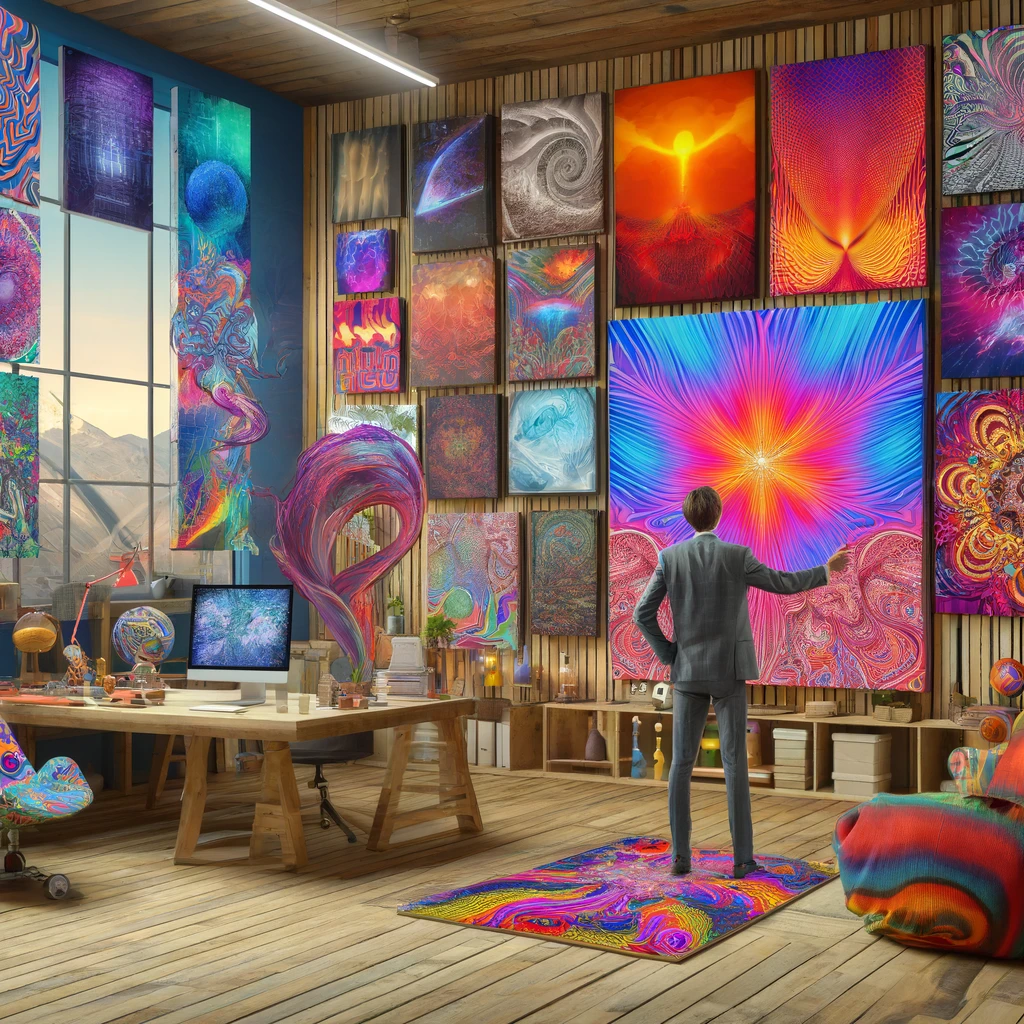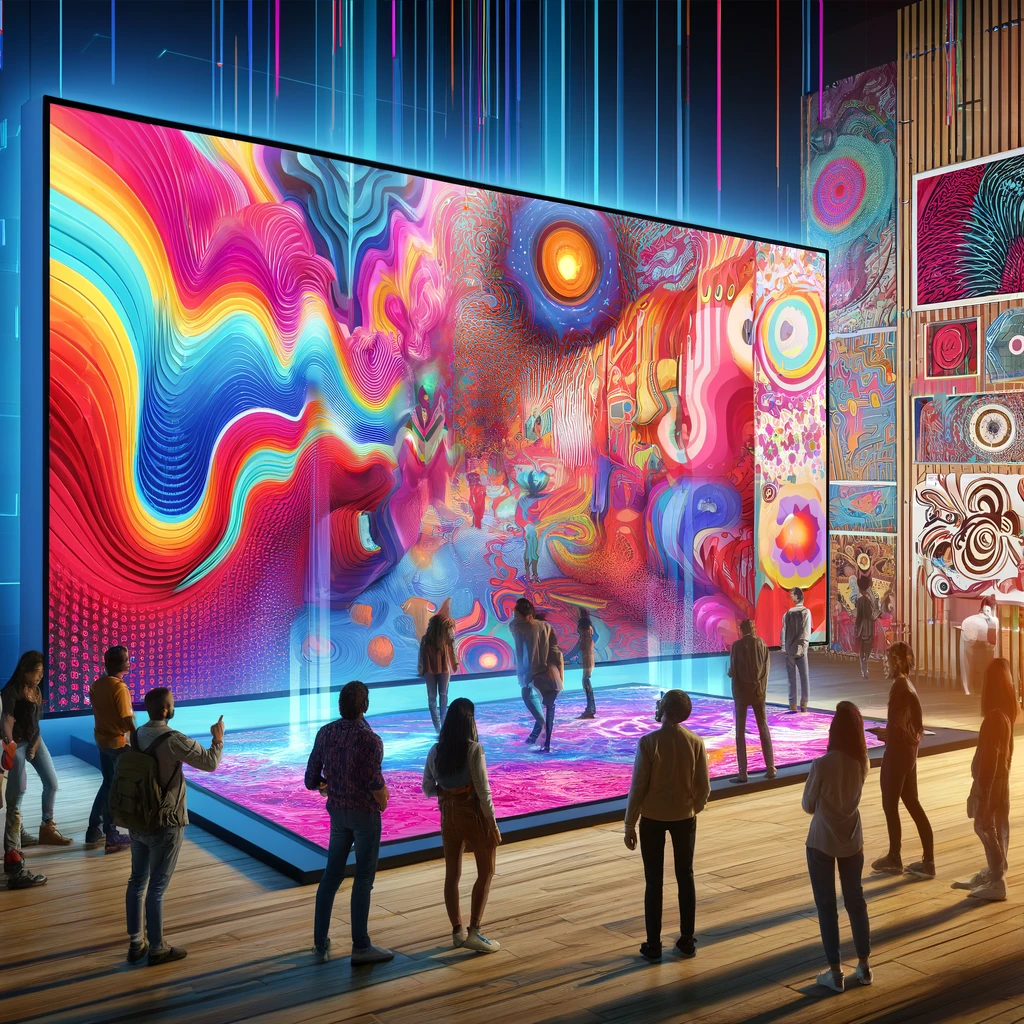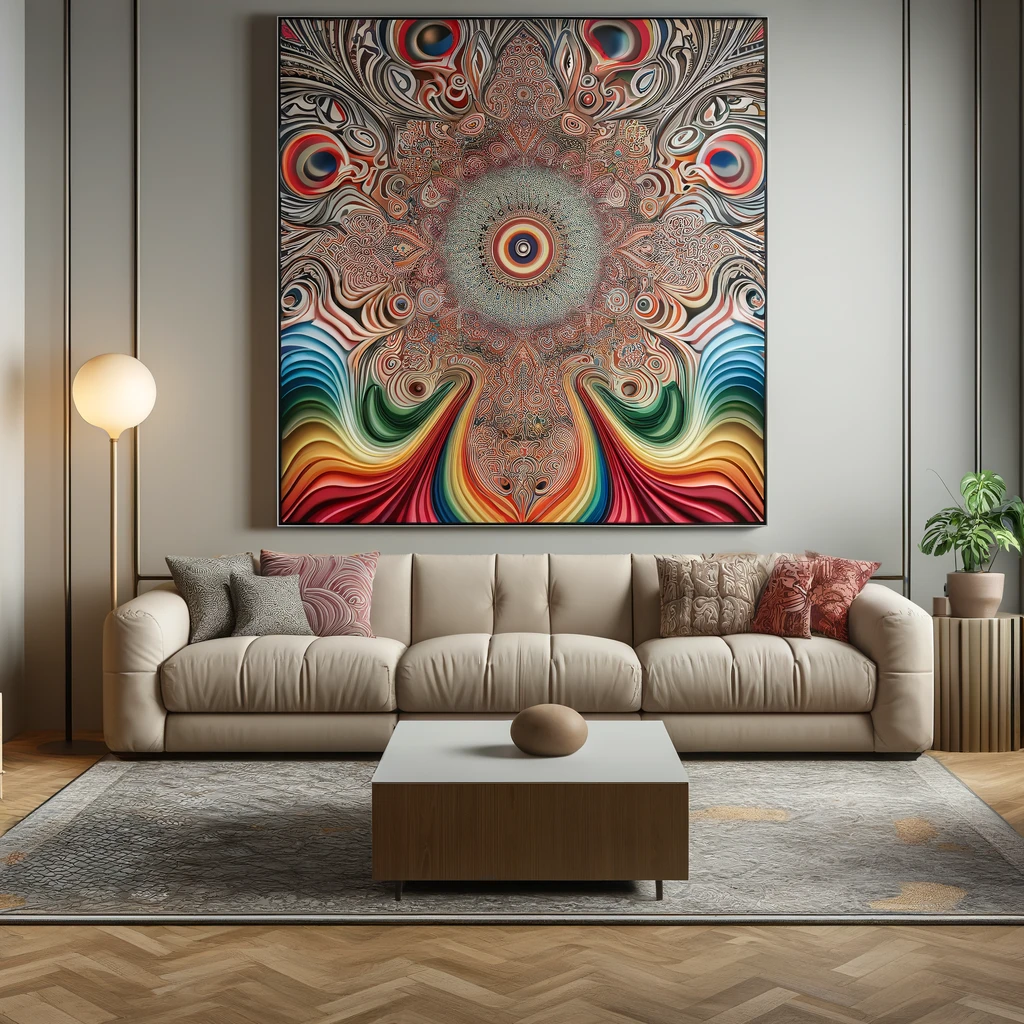
How to Choose the Perfect Trippy Wall Art for Your Space
Understanding Trippy Wall Art
Trippy wall art, often characterized by its psychedelic visuals and mind-bending patterns, serves as a vibrant expression of deeper thoughts and alternate realities.
Historical Context
The origins of psychedelic art can be traced back to the 1960s’ psychedelic movement, where it became a symbol of youth culture and rebellion. This art form is heavily influenced by the countercultural wave, psychedelic music, and the broader societal experimentation with psychedelic substances, which profoundly impacted visual aesthetics.
Key Influences
- Salvador Dali: Known for his surrealistic approach, his works offer a dream-like quality that has inspired many psychedelic artists.
- M.C. Escher: His intricate patterns and mind-bending optical illusions play a significant role in the foundations of trippy visual art.
- Peter Max: A pivotal figure in the psychedelic art scene known for his vivid color palette and psychedelic imagery that captured the era’s spirit.
Characteristics of Trippy Wall Art
Trippy wall art is not just about psychedelic colors swirling around; it’s a deliberate play on visual perceptions, often incorporating elements designed to make the viewer question reality.
Common Features
- Optical illusions: Art that tricks the eye and challenges perceptions.
- Vivid colors: Bright, often clashing colors that stand out and evoke strong emotional responses.
- Dynamic patterns: Swirling designs, spirals, and abstract forms that suggest movement and transformation.
Assessing Your Space for Trippy Wall Art
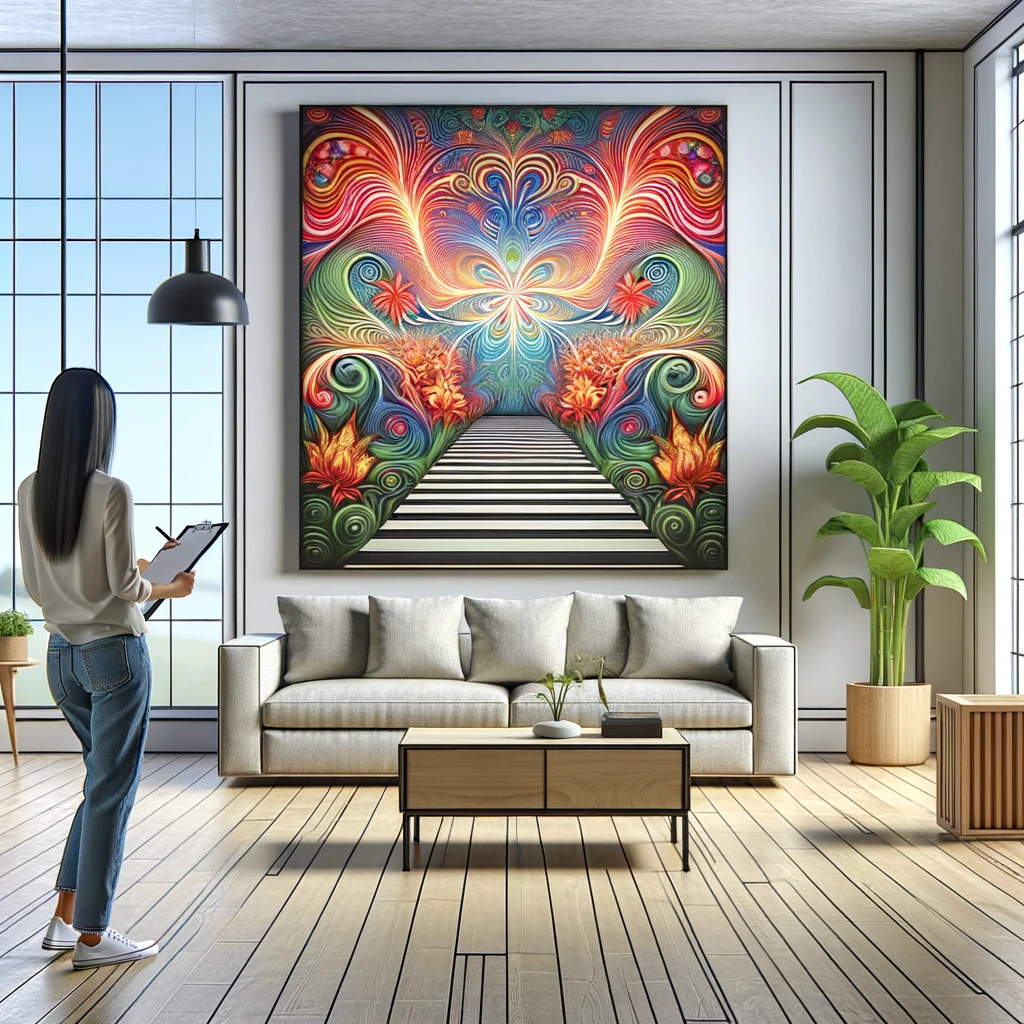
To effectively choose trippy wall art, one must first understand the dynamics of the space it will occupy.
Evaluating Room Characteristics
The room’s size, lighting, and existing décor play crucial roles in selecting the appropriate art piece.
Room Size and Layout
- Small Spaces: Opt for art with cooler colors or simpler designs to avoid overwhelming the space.
- Large Spaces: Larger, more detailed pieces or even full-wall murals can be accommodated.
Lighting Conditions
- Natural Light: Art with vibrant, psychedelic colors can be enhanced by natural lighting.
- Artificial Light: Strategic lighting can accentuate specific features of the art, such as glow-in-the-dark elements or reflective materials.
Current Decor
- Modern Decor: Complements abstract and surreal psychedelic pieces.
- Traditional Decor: Choose psychedelic art with softer colors and more fluid shapes to blend smoothly.
Matching Art with Room Function
The function of the room can dictate the type of trippy art that would be most appropriate.
Living Spaces
- Living Rooms: Art that stimulates conversation, such as complex abstract or surreal pieces.
- Bedrooms: Soothing designs with calming colors to promote relaxation.
Workspaces
- Studios or Home Offices: Art that inspires creativity, often vibrant and energizing to maintain focus and stimulate ideas.
By thoroughly assessing both the physical and aesthetic aspects of the space, one can choose trippy wall art that not only fits physically but also enhances the room’s overall atmosphere.
Get lost in the enchanting world of trippy wall art! Dive into our collection today and add a touch of psychedelic flair to your space
Choosing the Right Theme
Selecting the right theme for your trippy wall art is crucial as it sets the tone and mood of the room. Each theme carries its own unique vibe and energy, impacting the space’s aesthetics and the feelings it evokes.
Common Themes in Trippy Wall Art
Themes in trippy art often reflect concepts of surrealism, abstract expressions, and psychedelic experiences, each offering different visual and emotional experiences.
Psychedelic
- Features: Intense, vibrant colors and patterns that mimic hallucinogenic experiences.
- Impact: Creates a stimulating environment, often used in spaces for creativity and socializing.
Abstract
- Features: Focuses on geometric shapes, bold color blocks, and fluid forms.
- Impact: Promotes thought and conversation, suitable for living rooms or meeting spaces.
Surrealism
- Features: Combines dream-like imagery with bizarre, often illogical scenes.
- Impact: Adds a mysterious or whimsical touch to any space, ideal for bedrooms or private retreats.
Matching Art Themes with Room Function
The function of the room should guide the theme of the trippy wall art, enhancing the room’s purpose and the desired ambiance.
Living Room
- Ideal for themes that invoke openness and curiosity, such as abstract and psychedelic art, which can serve as ice-breakers or conversation starters.
Bedroom
- Best suited for surrealism or softer abstract designs that contribute to a calming and relaxing atmosphere, aiding in relaxation and reflection.
Study or Office
- Psychedelic or dynamic abstract art can be energizing, which is perfect for stimulating creativity and productivity in a workspace.
Selecting the Art Form
The physical form of trippy wall art can affect its perception and impact within a space. Different forms can cater to various aesthetic preferences and installation conditions.
Types of Trippy Wall Art
Choosing the right form depends on the space, budget, and personal preference regarding maintenance and installation.
Canvas Prints
- Description: High-quality prints on canvas, offering versatility in size and placement.
- Advantages: Easily available, relatively affordable, and simple to install.
- Use: Ideal for those who prefer a traditional art presentation with the ease of hanging and repositioning.
Murals
- Description: Large-scale paintings or installations that cover entire walls or significant portions of them.
- Advantages: Transformative impact, creating an immersive environment.
- Use: Best for permanent or long-term installations in dedicated spaces like themed rooms or entertainment areas.
Mixed Media
- Description: Incorporates various materials and techniques, including digital components, lights, or embedded objects.
- Advantages: Highly unique and customizable, often interactive.
- Use: Suitable for modern spaces and tech-savvy users looking for a dynamic and engaging art experience.
Each type of art form offers different aesthetic and practical benefits. When choosing, consider not only the visual impact but also the logistics of installation and maintenance, ensuring the art remains a cherished part of your space for years to come.
Incorporating Color Theory
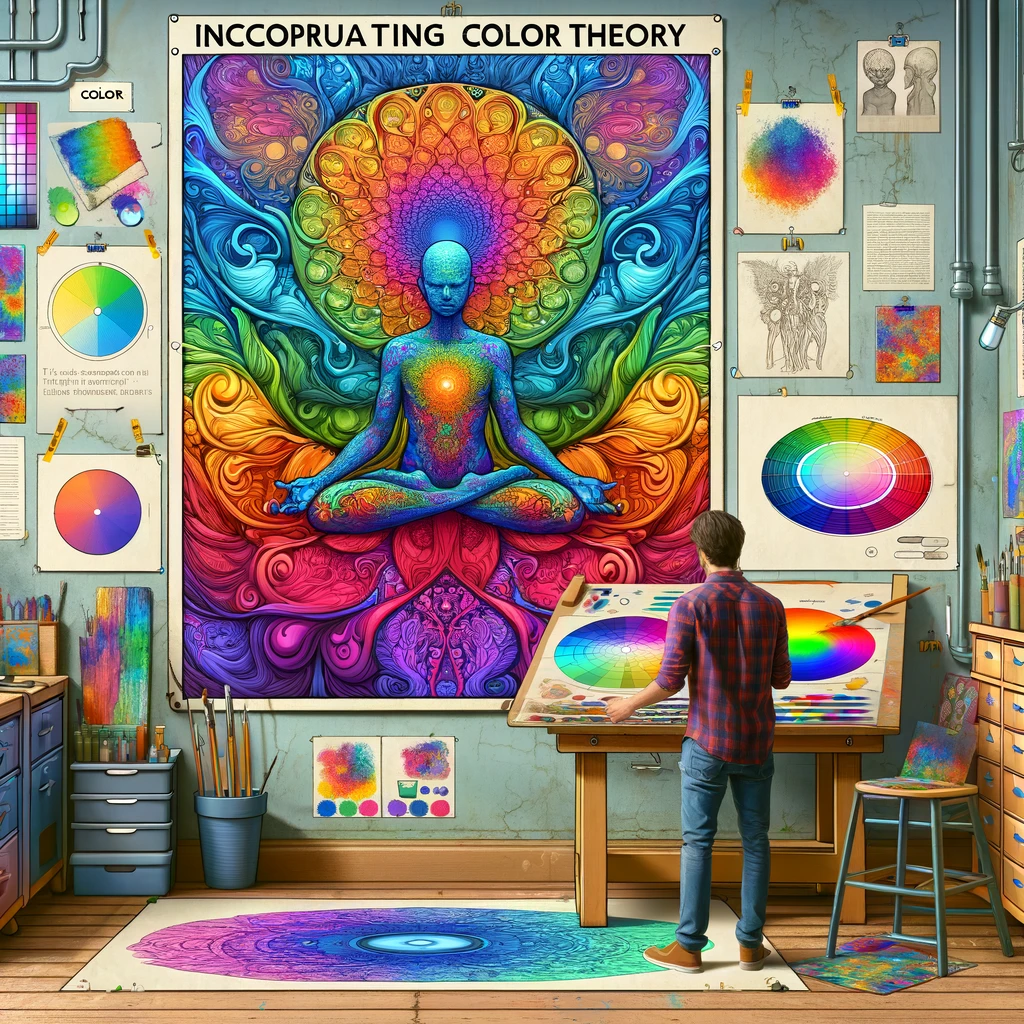
The application of color theory is vital in selecting trippy wall art, as colors can significantly influence emotions and perceptions within a space. Understanding the psychological impacts of specific colors can help in choosing artwork that aligns with the desired mood and atmosphere of a room.
Psychological Effects of Colors
Colors in trippy wall art can alter the feel of a room, impacting mood and behavior based on their psychological implications.
Energizing Colors
- Red and Orange: These colors are known for their ability to energize and stimulate. They can evoke feelings of excitement and passion, making them ideal for lively areas such as living rooms or entertainment spaces.
Calming Colors
- Blue and Green: Recognized for their soothing properties, these colors promote calmness and relaxation. They are perfectly suited for bedrooms, bathrooms, or any area where tranquility is desired.
Mood-Enhancing Colors
- Purple and Yellow: Purple is often associated with creativity and luxury, whereas yellow can brighten spaces and lift spirits, making them excellent choices for offices or creative studios.
Choosing Colors for Your Space
Selecting the right colors involves more than personal preference; it should also consider room size, lighting, and existing decor.
Complementary Colors
- Description: Colors opposite each other on the color wheel that create high contrast and vibrant looks.
- Use: Ideal for making art stand out and energize a space.
Analogous Colors
- Description: Colors next to each other on the color wheel that blend well and create serene and comfortable designs.
- Use: Best for rooms intended for relaxation or concentration.
Placement and Installation Tips
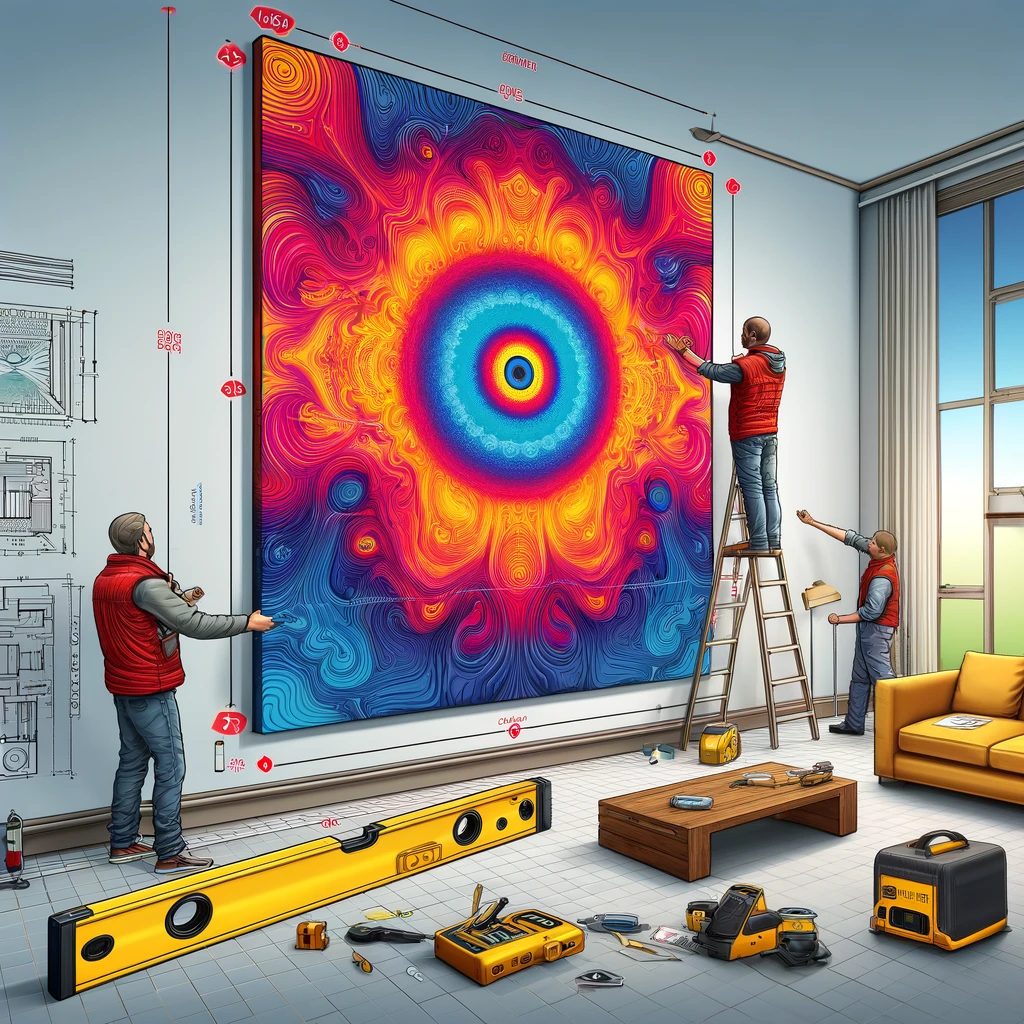
Proper placement and installation are crucial for maximizing the visual impact and ensuring the stability of trippy wall art.
Best Practices for Hanging Wall Art
Understanding the nuances of art placement can enhance the aesthetic harmony of a room and ensure artwork is viewed under the best conditions.
Height Considerations
- Eye Level: Generally, the center of the artwork should align with eye level, which is typically about 57 inches from the floor. This placement provides optimal viewing for an average adult.
Focal Points
- Description: Areas of the room naturally drawing the viewer’s eye, such as over a fireplace or the main wall visible upon entering the room.
- Use: Placing trippy art at focal points can make it a centerpiece, enhancing its impact and reinforcing room themes.
Creative Installation Ideas
Beyond traditional hanging, there are innovative ways to display trippy art that can add to its allure and interaction with the space.
Gallery Walls
- Description: An arrangement of several smaller artworks to form a larger exhibit.
- Use: This is effective in large open spaces or hallways and allows for the combination of multiple pieces, potentially telling a story or conveying a broader theme.
Safety and Maintenance Tips
Ensuring that trippy wall art is securely installed and maintained is essential for preserving its appearance and structural integrity.
- Secure Mounting: Use appropriate anchors and hooks for the weight of the piece.
- Regular Cleaning: Dust and clean art gently, avoiding harsh chemicals that could damage colors or materials.
By considering these factors in the placement and installation of your trippy wall art, you can enhance the overall atmosphere of your space while ensuring that the art remains a focal point and conversation starter for years to come.
Ready to turn your walls into a portal to another dimension? Explore our collection of trippy wall art and bring a surreal touch to your space!”
Interactive Elements in Trippy Wall Art
Integrating interactive elements into trippy wall art can elevate its appeal and engagement, offering viewers a dynamic and immersive experience.
Use of Augmented Reality (AR)
Augmented reality technology allows viewers to interact with digital elements overlaid onto physical artwork, blurring the lines between the real and virtual worlds.
Enhanced Engagement
- Description: AR features can add layers of depth and interactivity to static artwork, such as animations, sound effects, or additional visual elements.
- Benefits: This immersive experience captivates viewers and encourages prolonged engagement with the art piece.
Interactive Installations
Trippy wall art installations can incorporate elements that respond to viewer presence or movement, creating an interactive and participatory experience.
Sensory Stimulation
- Description: Installations may include elements such as light sensors, motion detectors, or touch-sensitive materials that react to the viewer’s actions.
- Benefits: This sensory feedback stimulates curiosity and exploration, fostering a deeper connection between the viewer and the artwork.
Where to Buy Trippy Wall Art
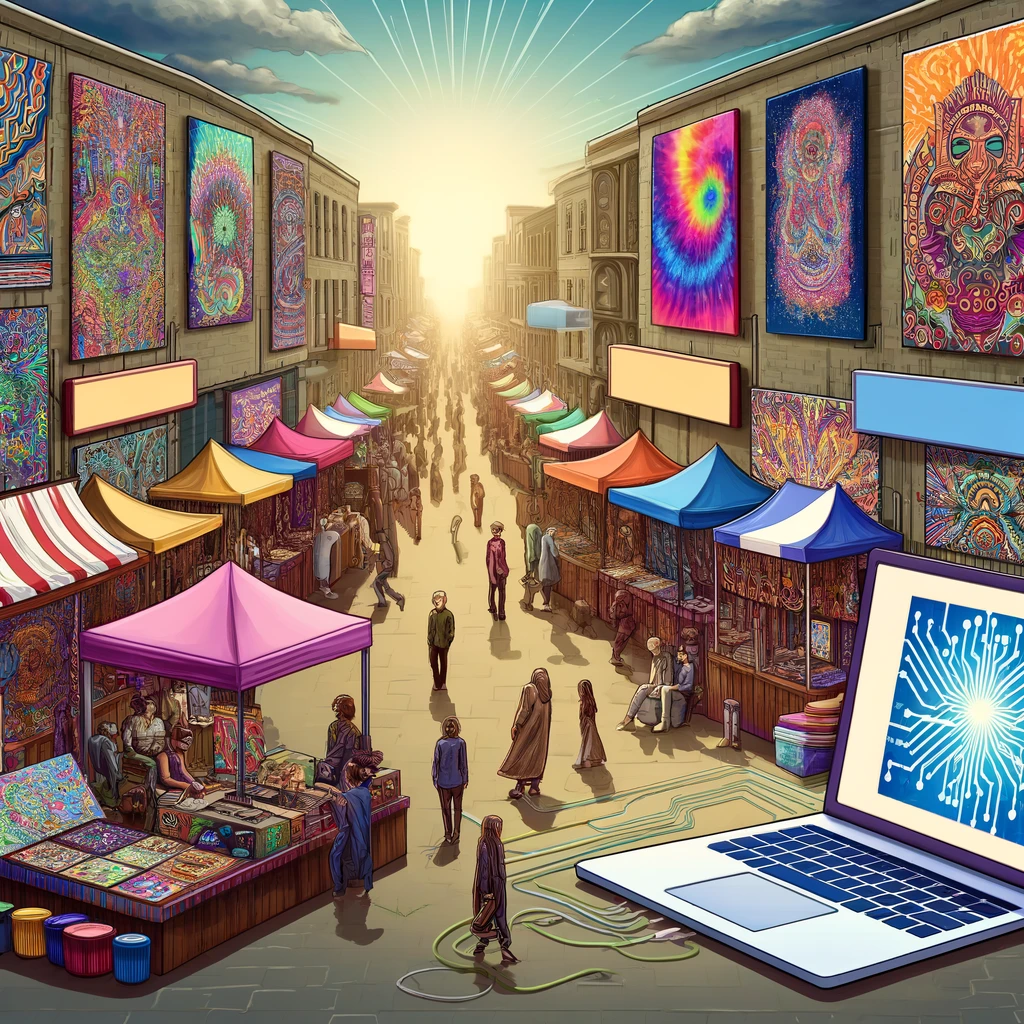
When looking to purchase trippy wall art, there are various options available, ranging from online galleries to local artists, each offering its own advantages and considerations.
Online Art Galleries
Online platforms provide a vast selection of trippy wall art from artists worldwide, offering convenience and accessibility to a diverse range of styles and price points.
Benefits
- Diverse Selection: Explore a wide variety of artists and styles from the comfort of your home.
- Convenience: Purchase artwork with ease and have it delivered directly to your doorstep.
Local Artists and Art Shows
Supporting local artists and attending art shows or exhibitions can offer a more personal and immersive experience, allowing you to connect directly with the creators and their work.
Benefits
- Personal Connection: Meet the artists, learn about their inspirations, and potentially commission custom pieces.
- Unique Finds: Discover one-of-a-kind artworks that may not be available through mainstream channels.
Considerations for Buying
When purchasing trippy wall art, it’s essential to consider factors such as authenticity, budget, and investment potential.
Authenticity
- Description: Ensure that the artwork is genuine and comes with appropriate documentation of authenticity.
- Importance: Authentic pieces hold greater value and may appreciate over time, making them worthwhile investments.
Budget
- Description: Set a budget based on your financial constraints and priorities, considering factors such as artwork size, materials, and artist reputation.
- Recommendation: Balance quality with affordability, and consider purchasing prints or reproductions for more budget-friendly options.
Whether browsing online galleries or supporting local artists, selecting trippy wall art should be an exciting and rewarding experience. By exploring different avenues and considering various factors, you can find the perfect piece to enhance your space and ignite your imagination.
DIY Trippy Wall Art Ideas
Creating your own trippy wall art can be a rewarding and personal way to add a unique touch to your space. Here are some DIY ideas to inspire your creativity:
Materials Needed
Gather the following materials to start your DIY trippy art project:
Acrylic Paints
- Description: Vibrant and versatile, acrylic paints offer a wide range of colors and textures for your artwork.
- Use: Experiment with different color combinations and techniques to achieve your desired effect.
Canvas or Large Paper
- Description: Provides a blank canvas for your artistic expression, available in various sizes to suit your space.
- Use: Choose a size that fits your wall space and allows ample room for creativity.
Brushes and Sponges
- Description: Essential tools for applying paint and creating textures in your artwork.
- Use: Use brushes for precise details and sponges for blending colors and creating unique patterns.
DIY Techniques
Explore different techniques to create trippy effects in your artwork:
Drip Painting
- Description: Apply paint to the top of the canvas and allow it to drip down, creating abstract patterns and textures.
- Use: Experiment with different viscosities of paint and angles of application to control the flow and direction of the drips.
Marbling
- Description: Swirl different colors of paint together on the canvas to create mesmerizing marbled patterns.
- Use: Use a comb or toothpick to manipulate the paint and create intricate designs.
Stencil Art
- Description: Use stencils to create repeating patterns or intricate designs on the canvas.
- Use: Experiment with different stencil shapes and sizes to create visually striking compositions.
Inspiration and Resources
Find inspiration and guidance for your DIY projects from online tutorials, art books, and local workshops:
Online Tutorials
- Description: Explore step-by-step tutorials and videos on various DIY art techniques and projects.
- Use: Follow along with experienced artists to learn new skills and techniques for creating trippy wall art.
Art Books
- Description: Browse through art books and magazines for inspiration and ideas for your DIY projects.
- Use: Study different artistic styles and techniques to develop your own unique artistic voice.
Local Workshops
- Description: Attend workshops or classes hosted by local artists or art organizations to learn new techniques and connect with other creatives.
- Use: Gain hands-on experience and personalized guidance from experienced artists to improve your skills and expand your artistic repertoire.
Creating and selecting trippy wall art is a deeply personal and rewarding experience that allows you to express your creativity and enhance your living space. Whether you choose to purchase artwork from online galleries or create your own DIY masterpieces, the key is to find pieces that resonate with you and reflect your unique style and personality.
By considering factors such as theme, color, and installation, you can ensure that your trippy wall art not only enhances the aesthetic appeal of your space but also creates a stimulating and inspiring environment for you and your guests to enjoy. So let your imagination run wild, and unleash your inner artist to transform your walls into captivating works of art.
Frequently Asked Questions
Explore answers to common queries related to trippy wall art purchases and placement:
Q: How do I protect my trippy wall art?
Properly protecting your trippy wall art ensures its longevity and preserves its aesthetic appeal. Consider the following tips:
Use UV Protection
- Description: Display your artwork away from direct sunlight or use UV-protective glass to prevent fading or discoloration caused by sun exposure.
Handle with Care
- Description: When handling or cleaning your art, use gentle, non-abrasive materials to avoid scratching or damaging the surface.
Regular Maintenance
- Description: Dust your artwork regularly with a soft, dry cloth to prevent dust buildup and maintain its appearance.
Q: Can trippy wall art be a good investment?
Investing in trippy wall art can be both aesthetically and financially rewarding. Here’s why:
Art as Investment
- Description: Original pieces by renowned artists or limited edition prints can appreciate in value over time, making them valuable assets.
Emotional Value
- Description: Even if the financial value doesn’t increase, the emotional value of owning art that speaks to you can be immeasurable.
Diversification
- Description: Investing in art can diversify your investment portfolio, providing a hedge against market fluctuations and economic uncertainty.
Research and Authentication
- Description: Before investing, research the artist and authenticate the artwork to ensure its legitimacy and potential for appreciation.
Investing in trippy wall art can be a fulfilling and potentially lucrative endeavor, providing both aesthetic enjoyment and financial returns over time.
